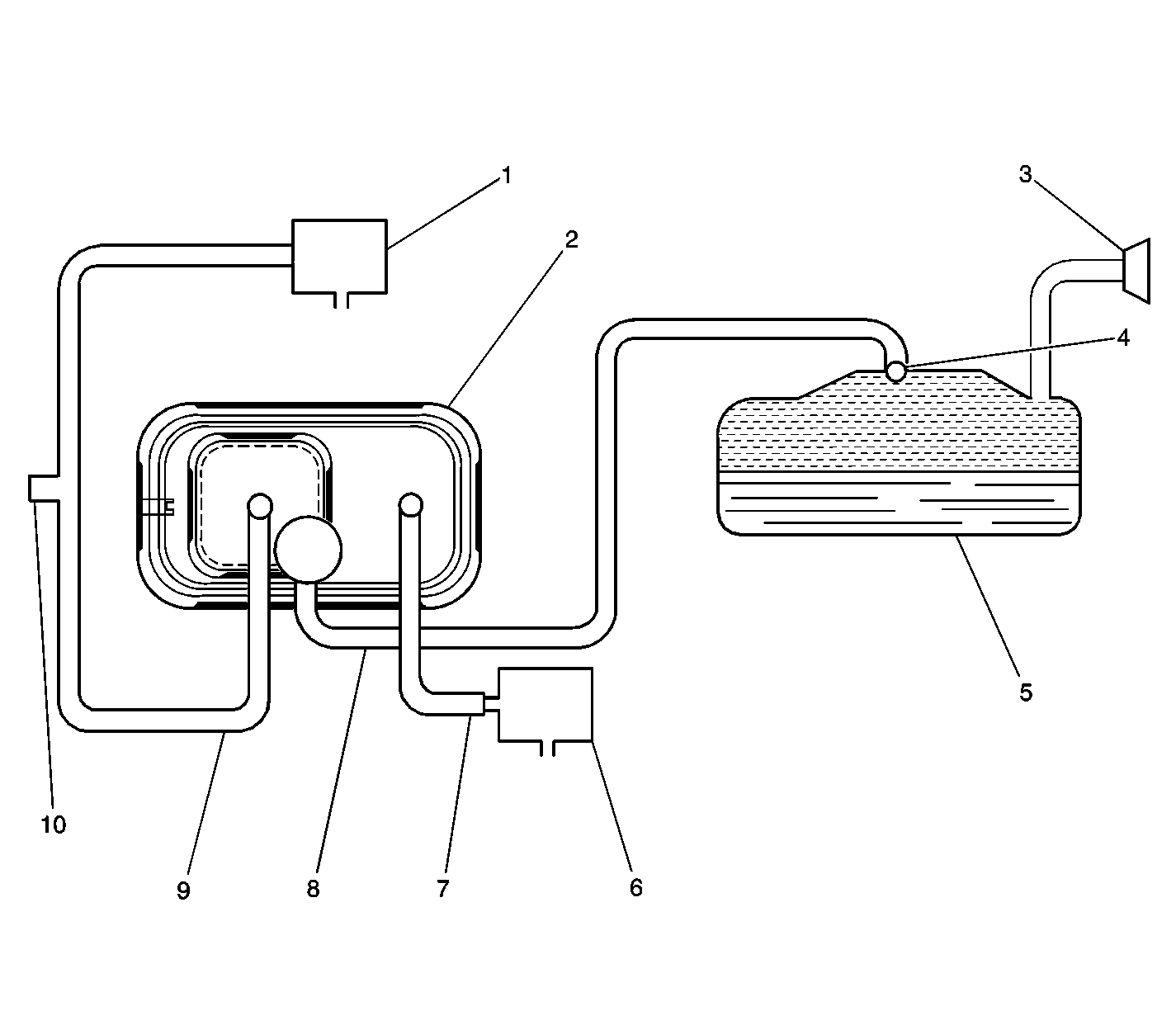Description
A restricted or blocked EVAP vent path is detected by the PCM monitoring the fuel tank pressure during normal operation. The PCM commands the EVAP vent valve OFF, and the EVAP canister purge valve ON. The fuel tank pressure should remain low as vacuum is drawn on the EVAP system. If the vent path is blocked or restricted, the vacuum level will increase and DTC P0446 will set.
Conditions for Running the DTC
- DTCs P0107, P0108, P0110, P0112, P0113, P0115, P0117, P0118, P0121, P0122, P0123, P0125, P0440, P0442, P0443, P0449, P0452, P0453, P1106, P1107, P1111, P1112, P1114, P1115, P1121, or P1122 are not active.
- The system voltage is between 10-18 volts.
- The startup engine coolant temperature (ECT) is between 4-30°C (39-86°F).
- The startup intake air temperature (IAT) is between 4-30°C (39-86°F).
- The fuel tank level is between 30-85 percent.
- The barometric pressure (BARO) is more than 75 kPa.
- The vehicle speed is less than 75 mph.
Conditions for Setting the DTC
| • | The fuel tank pressure is less than -10 inch H2O. |
| • | The condition is present for as long as 30 seconds. |
Action Taken When the DTC Sets
| • | The control module illuminates the malfunction indicator lamp (MIL) on the second consecutive ignition cycle that the diagnostic runs and fails. |
| • | The control module records the operating conditions at the time the diagnostic fails. The first time the diagnostic fails, the control module stores this information in the Failure Records. If the diagnostic reports a failure on the second consecutive ignition cycle, the control module records the operating conditions at the time of the failure. The control module writes the operating conditions to the Freeze Frame and updates the Failure Records. |
Conditions for Clearing the MIL/DTC
| • | The control module turns OFF the malfunction indicator lamp (MIL) after 3 consecutive ignition cycles that the diagnostic runs and does not fail. |
| • | A current DTC, Last Test Failed, clears when the diagnostic runs and passes. |
| • | A history DTC clears after 40 consecutive warm-up cycles, if no failures are reported by this or any other emission related diagnostic. |
| • | Clear the MIL and the DTC with a scan tool. |
Diagnostic Aids
The EVAP system tests run when the engine is first started and meets the Conditions for Running the DTC. An intermittent condition could be caused by a damaged EVAP vent housing, a temporary blockage at the EVAP vent valve inlet or a pinched vent hose. A blockage in the vent system will also cause a poor fuel fill problem. To repair a blockage in the EVAP system. Refer to Evaporative Emission System Cleaning .
Test Description
The numbers below refer to the step numbers on the diagnostic table.
Step | Action | Values | Yes | No | ||||
|---|---|---|---|---|---|---|---|---|
Schematic Reference:
| ||||||||
1 | Did you perform the Diagnostic System Check - Engine Controls? | -- | Go to Step 2 | |||||
2 | Did DTC P0443, P0449, P0452 or P0453 set? | -- | Go to Step 3 | |||||
3 | Inspect the EVAP system for the following conditions:
Did you find and correct the condition? | -- | Go to Step 12 | Go to Step 4 | ||||
Does the scan tool indicate that the Service Bay Test has passed? | -- | Go to Diagnostic Aids | Go to Step 5 | |||||
5 |
Does the scan tool indicate fuel tank pressure near the specified value? | 0 in H2O | Go to Step 6 | Go to Step 10 | ||||
6 |
Does the scan tool indicate fuel tank pressure near the second specified value? | 5 in H2O 0 in H2O | Go to Step 8 | Go to Step 7 | ||||
7 |
Does the scan tool indicate fuel tank pressure near the second specified value? | 5 in H2O 0 in H2O | Go to Step 11 | Go to Step 9 | ||||
8 | Replace the EVAP vent valve. Refer to Evaporative Emission Canister Vent Solenoid Valve Replacement . Did you complete the replacement? | -- | Go to Step 12 | -- | ||||
9 | Replace the EVAP canister. Refer to Evaporative Emission Canister Replacement . Did you complete the replacement? | -- | Go to Step 12 | -- | ||||
10 | Replace the fuel tank pressure sensor. Refer to Fuel Tank Pressure Sensor Replacement . Did you complete the replacement? | -- | Go to Step 12 | -- | ||||
11 | Repair for a blockage in the EVAP vent Hose. Did you complete the repair? | -- | Go to Step 12 | -- | ||||
12 |
Does the scan tool indicate that the Service Bay Test has passed? | -- | Go to Step 13 | Go to Step 3 | ||||
13 | With a scan tool, select the Review Info option Does the scan tool indicate any DTCs that have not been diagnosed? | -- | System OK | |||||

